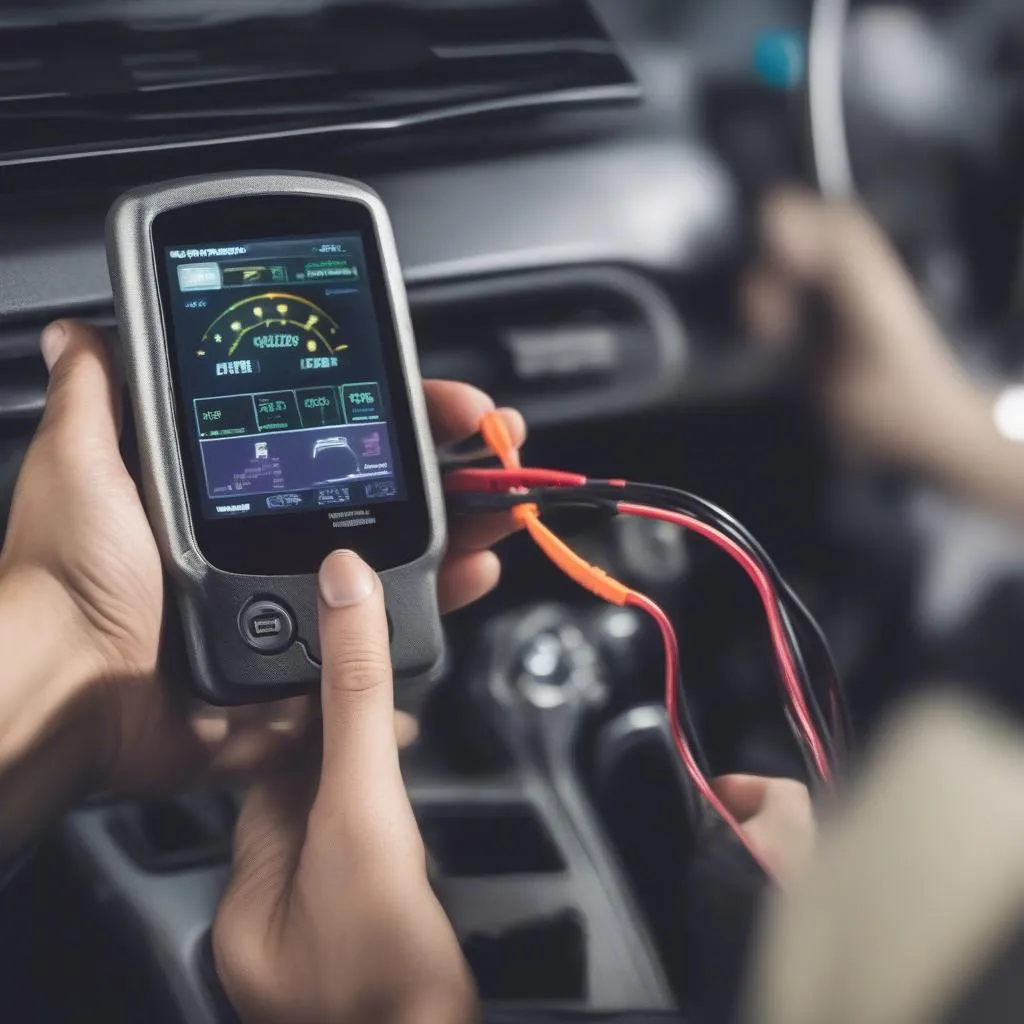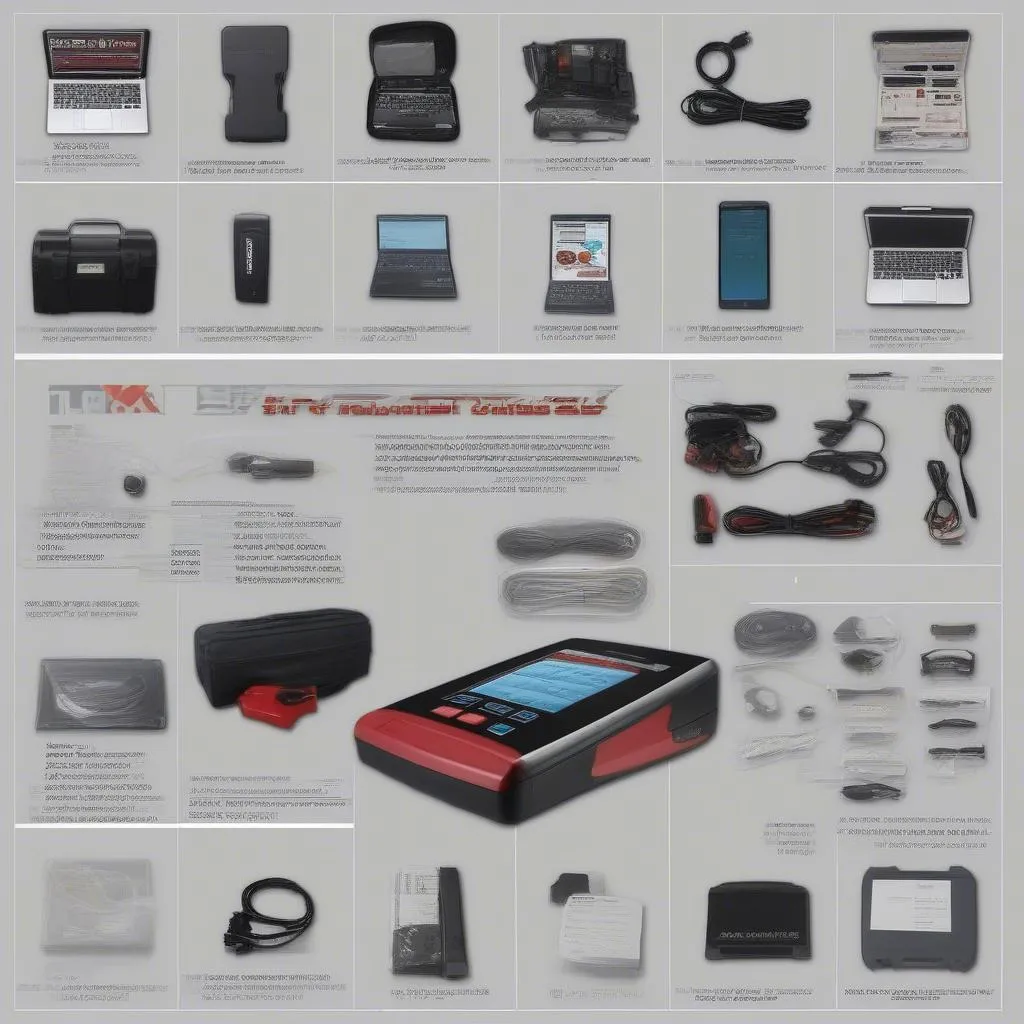Imagine this: you’re driving down the highway, enjoying a beautiful sunset, when your car suddenly starts making strange noises. You pull over, worried, and wonder what could be wrong. This is where OBD devices come in handy. They are your trusty companions for diagnosing car problems, giving you valuable insights into your vehicle’s health.
What is an OBD Device?
An OBD device, also known as an OBD scanner or diagnostic tool, is a small, portable device that plugs into your car’s On-Board Diagnostics (OBD) port. This port is a standardized connector found on most cars manufactured after 1996. By plugging the OBD device into this port, you can access a wealth of information about your car’s systems, including:
- Engine performance: Engine RPM, fuel pressure, air flow, and other engine parameters.
- Emissions: Oxygen sensor readings, catalytic converter status, and other emissions-related data.
- Transmission: Gear selection, speed, and torque information.
- ABS and Airbag systems: Fault codes and system status.
Why Should You Use an OBD Device?
Saving Money: OBD devices can help you pinpoint the source of car problems before they escalate, potentially saving you money on costly repairs. Imagine avoiding a costly tow truck ride by identifying a simple issue like a loose gas cap.
Understanding Your Car Better: OBD devices can help you understand your car’s performance and identify potential issues early on. This can be particularly helpful for car enthusiasts who want to monitor their vehicle’s health and make informed decisions about maintenance and upgrades.
Making Informed Repairs: Armed with diagnostic data from an OBD device, you can have more informed conversations with your mechanic, ensuring that you’re not overcharged for unnecessary repairs.
What are the Different Types of OBD Devices?
There are several types of OBD devices available, each with its own set of features and capabilities. The most common types include:
Code Readers
These devices are basic and affordable, mainly used to read and clear diagnostic trouble codes (DTCs). They provide you with a list of error codes, but they don’t offer detailed information about the cause or severity of the issue.
Diagnostic Scanners
These devices are more advanced and provide more detailed information about the fault codes, including the severity and potential causes. Some scanners also offer live data readings and can be used to monitor various vehicle parameters.
Dealer-Level Scanners
These scanners are used by car dealerships and offer the most comprehensive diagnostics capabilities. They can access all of the vehicle’s modules and provide in-depth information about various systems. Some dealer-level scanners are even capable of programming and calibrating certain vehicle components.
How to Choose the Right OBD Device
Choosing the right OBD device depends on your needs and budget. Consider the following factors:
- Compatibility: Ensure the device is compatible with your car model and year.
- Features: Decide what features are important to you, such as code reading, live data, or advanced diagnostics.
- Price: Set a budget and look for a device that offers the right features within your price range.
Using an OBD Device: A Simple Guide
Using an OBD device is relatively straightforward:
- Plug the device into the OBD port: This port is typically located under the dashboard, near the steering column.
- Turn the ignition key to the “on” position: The device will power up and start reading data from the vehicle’s computer.
- Read the results: Depending on the type of device, you’ll see a list of DTCs, live data readings, or other relevant information.
OBD Devices for European Cars: A Focus on Dealer Scanners
When it comes to European cars, using a dealer-level scanner is often essential for accurate diagnostics. These cars have complex electronic systems that require specialized tools to access and diagnose.
-
Benefits of Dealer Scanners for European Cars:
- Access to all modules: Dealer scanners can access all of the vehicle’s modules, including those that are not accessible by standard OBD devices.
- Programming and Calibration: These scanners can perform programming and calibration tasks, such as resetting service intervals and updating software.
- Comprehensive Diagnostics: They offer advanced diagnostics capabilities, providing detailed information about all of the vehicle’s systems.
-
Popular Dealer Scanners for European Cars:
- Launch X431: A popular choice for European cars, offering extensive coverage and advanced diagnostics capabilities.
- Autel MaxiCOM MK808: Another highly regarded option, offering similar features to the Launch X431.
- Carly for Android: A user-friendly app that connects to your smartphone and offers diagnostics, coding, and other features for European cars.
FAQs
1. Can I use an OBD device to diagnose a car’s electrical system?
Yes, some OBD devices can be used to diagnose electrical system issues. While not all devices will be able to access all electrical system modules, many will provide information about battery voltage, charging system status, and other electrical parameters.
2. Can I use an OBD device to clear fault codes without visiting a mechanic?
Yes, you can clear fault codes with an OBD device. However, it’s important to understand that clearing a code doesn’t mean the problem is fixed. The underlying issue may still exist and require further investigation.
3. What are some common OBD device error codes?
Here are some common error codes:
- P0171: System Too Lean (Bank 1)
- P0300: Random/Multiple Cylinder Misfire Detected
- P0420: Catalyst System Efficiency Below Threshold (Bank 1)
- P0700: Transmission Control System (TCM) Malfunction
Note: Always consult a repair manual or online resources for specific code definitions and troubleshooting steps.
Conclusion
OBD devices are powerful tools that can give you valuable insights into your car’s health. Whether you’re a car enthusiast, a DIY mechanic, or simply want to have more control over your car maintenance, these devices can be invaluable. Remember to choose a device that’s compatible with your car and offers the features you need.
Let us know in the comments: Have you used an OBD device before? What has been your experience?
Need help with diagnostics or have any questions? Contact us at Whatsapp: +84767531508. Our team of auto repair experts is available 24/7 to assist you.
 OBD Device
OBD Device
 Launch X431
Launch X431